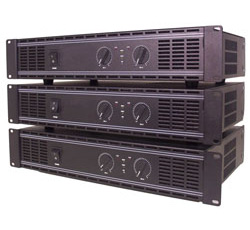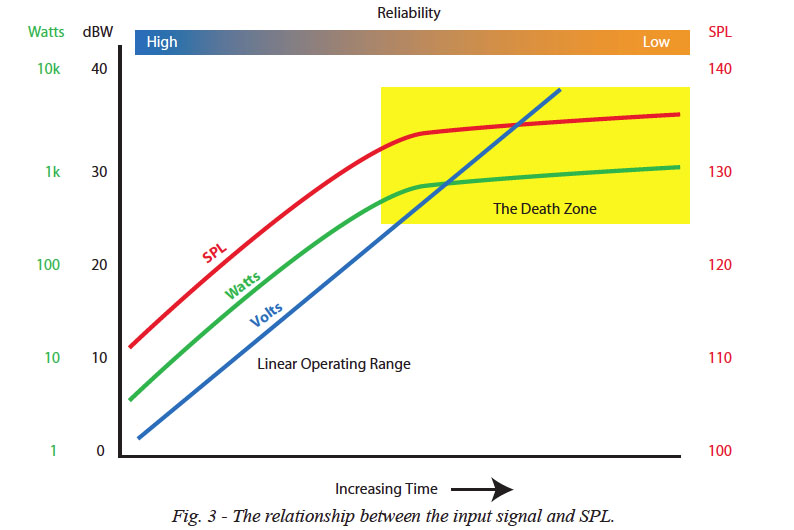
A meaningful power test must include:
• 1. A broadband noise stimulus that is band-limited for the device-under-test.
• 2. A method of determining the power transfer between the amplifier and the device-under-test.
• 3. A time metric that describes how long the loudspeaker can dissipate the applied power.
• 4. And (ideally) a measurement of SPL from the loudspeaker.
Figure 3 shows a useful way of plotting the results of the test. The noise stimulus for a power test is usually pink noise (equal energy per 1/n-octaves).
Some methods use flat pink noise (as viewed on a 1/N-octave analyzer) and others apply a weighting filter to simulate the spectral content of music.

The latter type can produce higher power ratings into full-range devices since more of the electrical energy is shifted toward the lower frequency bands where a transducer can usually dissipate more heat due to its heavier construction.
To determine power transfer both the voltage and the current applied to the device-under-test must be monitored. It is not sufficient to calculate the power transfer from the applied RMS voltage and the nominal impedance of the load.
The reason is that the load impedance will increase when the device-under-test heats up, reducing the power drawn by the load (power compression). The power drawn then ceases to track the applied voltage and the SPL may not increase as the drive voltage is increased.
Monitoring voltage and current will yield much more conservative power ratings than are often claimed by promotional materials. The loudspeaker’s impedance should also be monitored during a power test for increases due to heat. If it increases by more than 10 percent the loudspeaker is getting into trouble and the applied voltage should be reduced.
Our Old Friend The Decibel
It is best to consider power ratings on a decibel (proportional) rating scale. Wattage ratings can be extremely misleading with regard to the performance of a device.
